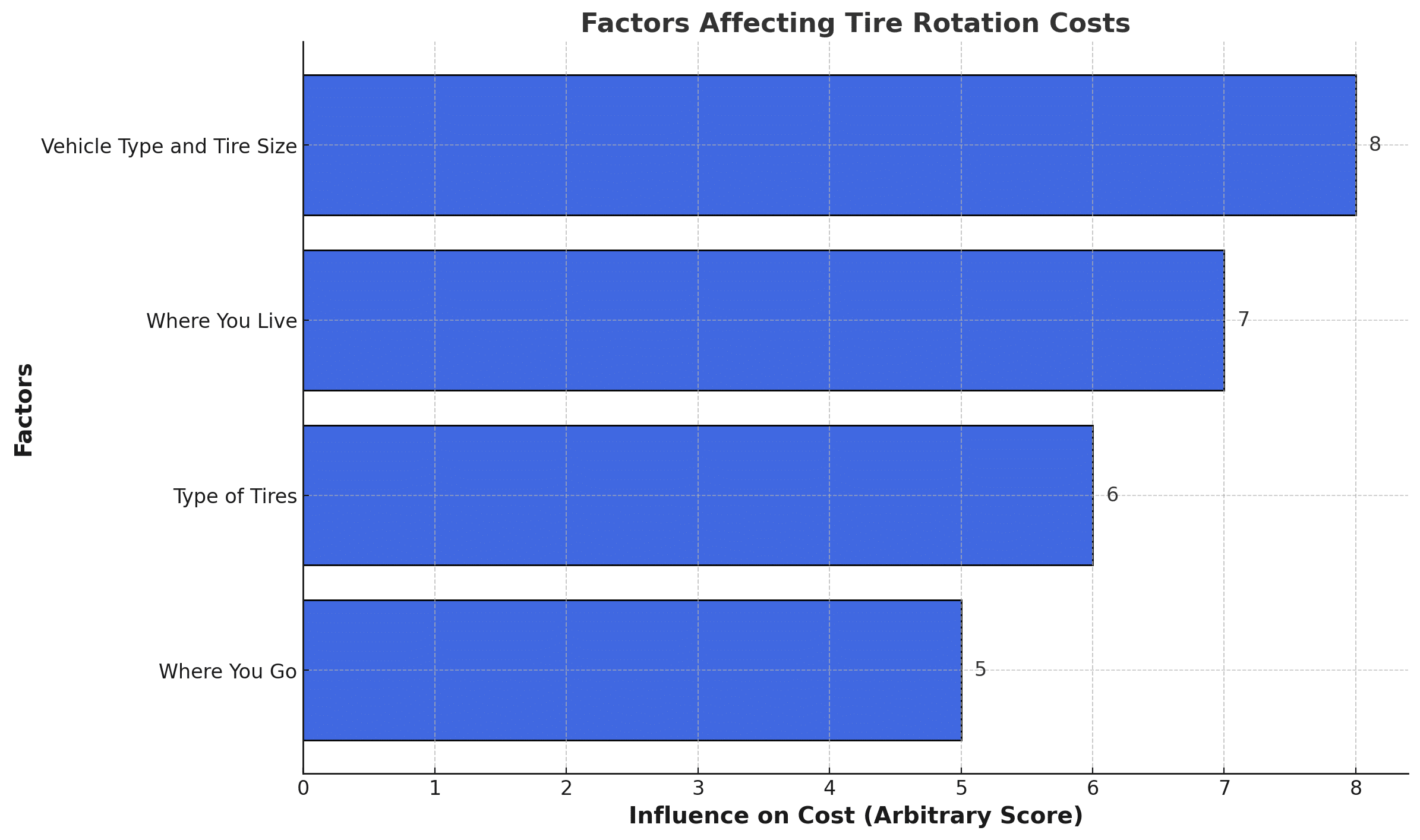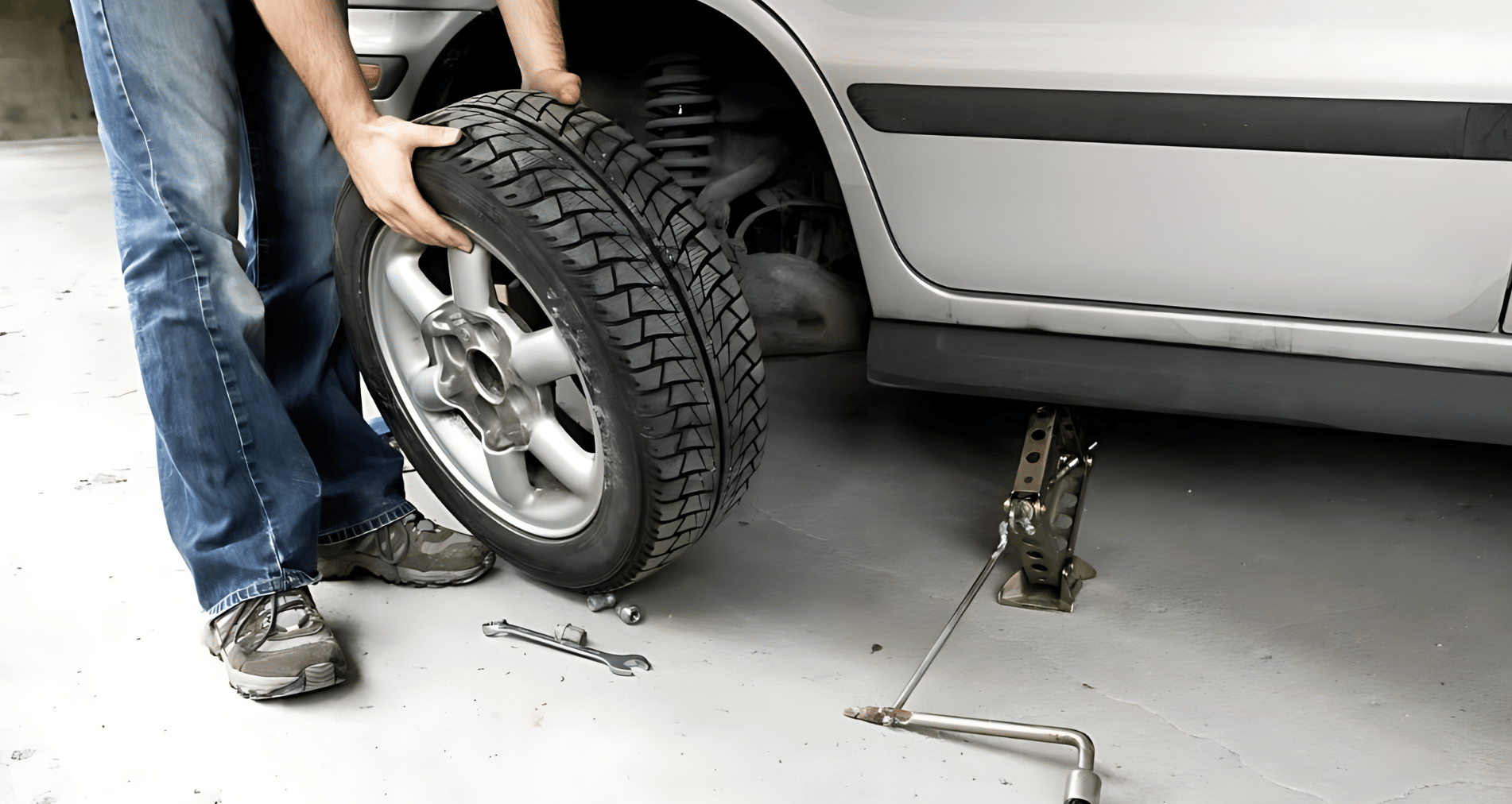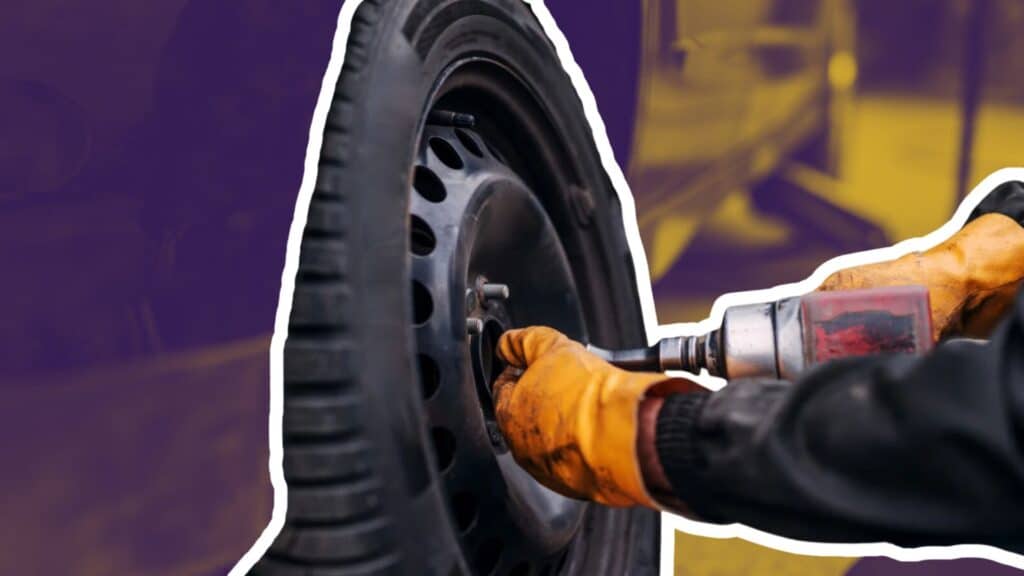Car owners must keep their vehicles in good shape, but maintenance can be costly.
Tire rotation is often overlooked, yet it’s a simple task that can save you money long-term. Many drivers put it off, worried about the expense or unsure of its value.
Good news! Tire rotation doesn’t have to break the bank.
This guide will show you how to find affordable tire rotation services without compromising quality.
We’ll cover average costs, factors affecting pricing, and tips to help you save money. You’ll learn about different service providers when to rotate your tires, and whether DIY is worth considering.
By the end, you’ll know exactly how to keep your tires in top condition without emptying your wallet.
What is Tire Rotation?

Tire rotation is a key part of car care that many folks overlook. In this, we move your car’s tires from one spot to another.
Usually, we switch the front tires with the back ones.
Why do this? Your tires don’t all wear down the same way. The front tires often wear faster than the back ones. By moving them around, we help all your tires wear more evenly.
This means they’ll last longer, saving you money.
Rotating your tires regularly also helps your car drive smoother and safer, and it can even improve your gas mileage.
So, while it might seem small, tire rotation is important for keeping your vehicle in good shape.
The Cost of Tire Rotation
Tire rotation costs can vary quite a bit. You might be surprised that prices range from free to about $150.
Why such a big difference? Well, it depends on where you go and what kind of car you have.
Some places offer free tire rotations if you bought your tires from them. That’s a great deal! On the other hand, fancy car dealerships or high-end shops might charge more, sometimes up to $150.
Most people expect to pay between $24 and $50 for a standard tire rotation, which they typically get at their local mechanic or tire shop.
The cost can also vary depending on your car’s type. Bigger vehicles or those with special tires might cost more to rotate.
Factors Affecting Tire Rotation Costs
The price of a tire rotation isn’t set in stone. Several things can make it cost more or less:

The bar chart above illustrates the key factors influencing the cost of tire rotation services. Vehicle type and tire size have the highest impact, followed by location, tire type, and choice of service provider.
How to Find Affordable Tire Rotation Services
Keeping your tires in good shape doesn’t have to cost a fortune. With some smart shopping, you can find great deals on tire rotations. Here are some tips to help you save:
1. Compare Prices
Take some time to call around and compare prices at different shops. Don’t just settle for the first price you hear.
Ask about any extra fees or charges to get the full picture. Some places might offer a better deal if you get other services done simultaneously.
The cheapest option isn’t always the best, but knowing the going rates can help you spot a good deal.
2. Check for Free Offers
Many tire shops offer free rotations when you buy tires, saving you much money.
When shopping for new tires, ask if they include free rotations.
Some places offer this for the life of your tires. It’s a great deal if you can get it. Don’t be shy about asking – it could lead to big savings.
3. Utilize Coupons and Discounts
Keep an eye out for coupons and special deals. Many shops run promotions to bring in new customers.
Check your local paper, online ads, or the shop’s website for discounts.
Some places also mail coupons. You might get extra savings if you’re a car club member or belong to certain groups. It never hurts to ask if they have any current deals.
4. Consider Big-Box Stores
Stores like Costco can be a good option for cheap tire rotations.
They often have lower prices than other places, and some even offer free rotations if you buy your tires there.
The catch? You might have to wait longer since these stores can be busy. But if you’re not in a rush, it could save you some cash.
DIY Tire Rotation: Is It Worth It?

Some car owners like to take care of their vehicles themselves. Rotating tires at home can save money, but it’s not for everyone. Before trying it yourself, let’s consider what you need and what to think about.
1. Tools and Skills Required
To rotate your tires at home, you’ll need a few things:
- A car jack and jack stands
- A lug wrench
- A torque wrench
- Some strength and patience
You’ll also need to know how to use these tools safely. Understanding your car’s weight limits and where to place the jack is important.
You should also know how to lift your car without damaging it. Different vehicles need different rotation patterns.
2. Risks and Considerations
While DIY can save money, there are risks to think about:
- Safety: If you don’t lift your car right, it could fall and hurt you.
- Damage: You might scratch your wheels or hurt your car if you’re not careful.
- Time: It can take a while if you’re new to this, especially your first time.
- Equipment: Buying tools can be costly if you don’t already have them.
Many people choose to leave tire rotation to the pros. They have the right tools and know-how to do it quickly and safely.
Plus, they can spot other tire issues you might miss. If you’re unsure about doing it yourself, paying for peace of mind is okay.
Pros and Cons of Different Providers
| Provider Type | Pros | Cons |
|---|---|---|
| Local Mechanic Shops | – Often cheaper than dealerships – May offer more personal service |
– Might not have the latest equipment |
| Dealerships | – Know your specific car model best – Often have the newest tools |
– Usually more expensive |
| Tire Specialty Stores | – Very knowledgeable about tires – May offer good deals on tire-related services |
– Might try to sell you new tires when you don’t need them |
| Big-Box Stores | – Often have the lowest prices – Convenient if you’re already a member |
– Can have long wait times |
How Often Should You Rotate Your Tires?
Knowing when to rotate your tires helps keep your car running smoothly and safely. Let’s look at some guidelines to help you stay on track.
1. General Guidelines
Almost as often as they change their oil, most cars should rotate tires every 5,000 to 8,000 miles.
Some folks like to do both simultaneously to keep things simple.
2. Consult Your Owner’s Manual
Your car’s manual is your best friend here. It tells you exactly what the manufacturer suggests.
The manual might also show you the best way to rotate your specific tires. Following these tips helps keep your warranty valid.
3. Signs It’s Time to Rotate
Sometimes, your car will tell you it needs a tire rotation. Here’s what to watch for:
- Uneven tread wear: If some tires look more worn than others
- Vibrations: If you feel shaking, especially at high speeds
- Reduced fuel efficiency: If you’re suddenly using more gas
- Noise: If you hear humming or buzzing from your tires
If you notice these signs, it might be time for a rotation, even if you haven’t hit the usual mileage mark. Rotating a bit early is better than letting problems get worse.
Additional Tire Maintenance Tips
While rotating your tires is important, there are a couple more things to remember for top-notch tire care.
Shops often suggest balancing and alignment with rotation. Balancing ensures even tire wear, stops shaking, and helps tires last longer.
Alignment keeps your car driving straight. If your vehicle pulls to one side, you might need an alignment. Good alignment helps tires last longer and improves handling.
Checking tire pressure is quick and important. Proper pressure helps tires wear evenly and saves gas. Under-inflated tires wear out faster and can be unsafe.
Rotation time is perfect for checking pressure. Use a gauge to check, even if your car has sensors. The right pressure is usually listed on a sticker or manual on your car door.
Doing these with rotation can save time and money in the long run.
Conclusion
Now that you know about affordable tire rotation, it’s time to act. Regular rotations aren’t just about saving money—they keep you safe on the road.
Following our tips, you can find great deals and maintain your tires without breaking the bank.
Don’t put off this important task. Check your owner’s manual, set a reminder, and make tire rotation part of your car care routine.
Consistency is key in choosing a local shop, a dealership, or a DIY.
Remember, proper tire care goes beyond rotation. Monitor your tire pressure and consider balancing and alignment services when needed.
These small steps can lead to big savings and a smoother ride.
Safe driving, everyone!
Frequently Asked Questions
What if I Don’t Rotate My Tires?
If you skip tire rotations, your tires will wear unevenly, reducing lifespan. This can lead to poor handling, decreased safety, and higher costs in the long term.
Do All Tires Need to be Rotated the Same Way?
No, rotation patterns can vary. Some tires are directional and can only be rotated front to back. Always check your owner’s manual for the right pattern.
How Long Does a Tire Rotation Take?
A professional tire rotation usually takes 15 to 30 minutes. It might take longer if you’re also getting other services done.


